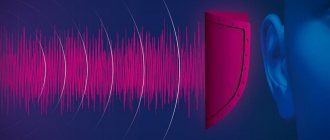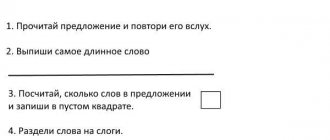Burr is a defect in the pronunciation of the letter “r”, resulting from a violation of the articulation of the speech apparatus. It sounds soft, there is a similarity with other sounds. Deviation rarely causes significant discomfort in people. The degree of its severity depends on the cause of its occurrence. They turn to a speech therapist to eliminate a speech defect, and if they want to “acquire” this skill, they practice it at home.
French is considered one of the most beautiful languages in the world and is loved by many. This is due to its phonetics. The special pronunciation of the letter “r” is called “grassing,” which translated means “burr.” By the way, if a Frenchman pronounces this sound clearly, he is considered uneducated. This is approximately how we treat “GC”. From a linguistic point of view, there is a distinction between Latin and French “R”, represented by different letters of the same meaning.
Types of grassage
According to the characteristics of phoneme formation, three types of “r” are distinguished:
- apical, or front-lingual - its pronunciation is based on the participation of the tip of the tongue;
- dorsal (back-lingual), respectively, formed using the back of the back of the tongue or the edge of the soft palate; there is no vibration when it is fed;
- “grassed”, formed due to the vibration of a small tongue.
In modern French, the dorsal, or Parisian, variant is more often heard. Its difference from the usual “r” is that not only the tip of the tongue is involved in its formation.
How to check this: say a familiar sound and remember the location of the organ at that time. Then try to engage the base of the tongue in the process. Burr will appear after the air flow passes through the throat and oral cavity. It is now fashionable to burr in French among adults and young people. In childhood, on the contrary, they try to get rid of this deviation.
When pronouncing “g” in the Ukrainian manner, if the number of hesitations is more than one, you will get the German pronunciation “r”.
Learning to pronounce French R
Very often, parents are concerned if a child cannot pronounce the letter P correctly for a long time - beautifully, loudly.
Every speech therapist most likely sees the majority of children with just such a problem.
In our times there were no speech therapists or anything. Somehow the children were learning. No one was left with a burr.
But times have changed, new professions have appeared (one of them is speech therapist), new jobs are being created (in almost every kindergarten - that’s for sure).
At the beginning of each year, speech therapists write work plans for the year, come up with (sometimes they pull it out of thin air - sorry, I couldn’t resist) what speech disorders to detect in students and what methods to use to correct them.
A thorough check of speech development in groups begins.
And there are always children who need to be (immediately!) enrolled in classes with a speech therapist.
Forgive me for writing this way, I’m just used to expressing myself honestly and directly.
Whether the child needs to correct his speech or not, the planned number of “test subjects” for the speech therapist in kindergarten will always be filled.
And then classes will begin with each child individually.
Oh, that’s not what I started writing about, but I just couldn’t suppress my feelings and emotions.
Actually, today I want to talk about the anomalous sound pronunciation of R (is it anomalous?).
The French say this - they don’t care, no one corrects them. Our children with French R are on the carpet to see a speech therapist.
But it’s amazingly beautiful! Why break the baby's speech! Maybe he will go to live in France later. Then this beautiful R will be very useful to him.
But no, you have to break it.
In general, I am against breaking the French R. Some people, on the contrary, want to buy it.
And here’s how to do this, how to learn to pronounce the French R, the topic of today’s article.
I often come across such recommendations for learning R in French - listen more to the speech of the French, pronounce the words after them, imitating.
But this is absurd!
How can you simply imitate if you have no idea where this French R is pronounced?
- Therefore, first we need to understand for ourselves and convey to the child as clearly as possible (if we teach French to a child) that when we pronounce R in French, the tongue moves completely differently than when we growl in Russian.
In our speech, we place the tip of the tongue on the tubercles behind the teeth, and the French R is pronounced with the root of the tongue.Show the child in the picture, and then on yours, and then on his own (through the mirror) organs, where the tip of the tongue is and where the root is.
- The next stage is working with the language. And it doesn’t matter whether it’s in front of a mirror or whether the student closes his eyes and imagines his speech apparatus, but one must learn to feel the language and play with it in the following way:
We slowly move the tip of the tongue from the teeth up to the neck. This exercise will help strengthen the muscles at the root of the tongue. Perform the exercise as many times as you have patience for.The more the tongue muscle is strengthened in the root area, the easier it will be to manipulate it later.
- Next, you should perform exercises to lift the very root of the tongue to the palate.
At the same time, the tongue straightens and lies flat, resting against the lower teeth. At first, it is better to simply do this exercise, without adding any sounds. - At the next stage we add sounds.
Take a word starting with X (bread), highlight the first sound and pronounce it as clearly as possible. X-x-x. - Now we try to pronounce the sound X not dull, but loudly, then we alternate: X deaf - X voiced. Let's get closer to Ukrainian G.
After completing this series of exercises, I recommend gargling by taking a little water and throwing your head back.
The gurgling that results in the throat is almost the French sound R.
Now you need to learn how to gurgle on your own, but without water and rinsing.
While rinsing, try to remember the movement of the root of the tongue, so that you can then reproduce it from memory without water.
Now all that remains is training. We choose words with the sounds X, G and R and pronounce them many times, trying to gurgle in the right place in the word.
And the most useful thing, in my opinion, will be recording your workouts on a voice recorder.
Regular exercise for about 20-30 minutes a day will give results within a week.
Your French R sound will be excellent. Good luck!
In the next article, we learn to pronounce DR-TR.
Related posts:
- What is "War and Peace" about? Summary of the novel “War and Peace” by chapters. All answers...
- A child does not know how to say R - we’ll show you how to teach it. To teach a child to pronounce the letter R, you need to regularly perform special...
- Rhoticism in speech - complete information Rhotacism (problem with the sound [P]) is the most common disorder in children...
- What do we know about Morse code? Morse code was created to transmit short information. But use...
How does the sound “X” help?
The mechanism of formation of these two phonemes is similar. Exercise for setting a graded “r”:
- Say the word with the letter “X” several times (bread, halva). Pay attention to the movements of the tongue at this time.
- Next, play the sound separately, gradually trying to replace it with a sonorous one.
- As the workout ends, you should hear a defective "P".
It will not be possible to quickly achieve lasting results; the main thing is not to interrupt classes and carry them out daily. After your sound becomes burry, it must be fully introduced into speech. If you do not use this skill systematically, it is easy to lose it. In this case, you will have to start lessons over again. The maximum result is such that a person can easily rearrange the articulation of sound at any time without much effort.
Approximation method (approximate method)
Do you speak another language? You might get lucky.
Using the approximation method, you can "borrow" the French letter "R" from other languages that have similar sounds!
This is because the French "R" is very similar to the glottal sound (made by the throat) in other languages. However, keep in mind that the French "R" sound is not exactly the same as these sounds, it's just an approximation.
For example, the French "R" sounds the same as the letter "g" in languages such as Dutch and Afrikaans. However, in the case of French, the "R" sound is made a little higher in the throat, so try to raise it up to the uvula.
The French "R" sound can also be found in Arabic kh and is similar to the German ch found in the middle of words such as machen (to do/make).
Even English has a sound very close to the French "R"! This is similar to the sound at the end of the Scottish name Loch, as in Lochness Monster.
By using your knowledge of another language as a basis for the French "R", you make some pretty accurate substitutions for that tricky sound.
In addition, using these sounds as a basis, you can fine-tune your pronunciation even more precisely.
Development mechanism
Why do people burr? There can be many reasons for this. To clarify them, you need to contact a defectologist or speech therapist. This defect occurs in adults and children. If burring, or rotacism, occurs at an early age, the cause may be a short frenulum. In this case, the child does not understand how to pronounce this sound. You also need to make sure there are no problems with phonemic hearing.
Another factor influencing the aspect of speech is imitation of parents. When one of the parents experiences similar difficulties in a family, the child involuntarily repeats them. You can learn to pronounce this letter correctly in several sessions with a specialist.
Other causes of burr:
- tongue paresis;
- congenital defects of the speech apparatus;
- malocclusion;
- weak tongue muscles;
- underdevelopment of the jaw;
- nationality if parents speak different languages;
- genetic predisposition.
How does such a special pronunciation of sound arise? When the tongue approaches the lower edge of the soft palate, the stream of exhaled air causes vibration. This creates additional noise and defective sounds [р] and [рь], the so-called velar [р]. In addition, vibrations of the small tongue may occur (uvular, or throat, form of burr).
This French pronunciation of “r” can be learned artificially.
In this language, the necessary guttural sound is obtained from the root of the organ.
The letter e is at the end of words. French accent. French vowel clarity
The letter e at the end of words is in most cases unreadable, for example: dam e [dam] - lady, arab e [aráb] - Arabic, -aya, -oe.
The stress in French words falls on the last syllable, for example: papa [papá] - dad. It will not be indicated further in the transcription.
All French vowels sound equally distinct and bright both under stress and in unstressed position, for example: panama [p a n a m a ] - Panama. All three [a] are pronounced equally energetically and are not “swallowed” or changed.
Exercise No. 6. Read, not forgetting that the stress in French words always falls on the last syllable:
| banane [banan] - banana | papa [papa] - dad |
| madame [madam] - madam | Nana [nana] - Nana |
| panama [panama] - Panama | (female name) |
Sound production methods
You don’t have to immediately contact a specialist; try correcting your pronunciation at home on your own. Examples of exercises:
- Relax your tongue and lightly touch the back of your tongue to the edge of your palate. The touch should be light. With regular exercise, a slight burr will appear. Many people find it helpful in the initial stages to use a mirror as an object for observing the movements of the articulatory apparatus.
- Each of us gargled when we had a sore throat. When you throw your head back and “gurgle”, pronounce the Ukrainian “g”. Such training should also be regular.
- The easiest way is to audio play French speech and repeat it. These could be lessons, songs you like, sayings with this sound. For example, try saying: “Rat vit riz rat mit patte à ras rat mit patte à riz riz ciut patte à rat.”
It will be useful to record your speech on a voice recorder. This way you will observe the dynamics of the manifestation of rotacism.
The most important thing is that if you are learning to burr in order to visit this amazing country or move to a permanent place of residence, even when you speak without much burr, the Frenchman will still understand your speech.
Double consonants
Double consonants are read as one sound, for example: A nn e [an] - Anna, ba tt e [bat] - sledgehammer.
Exercise No. 7. Read:
| date [dat] — date | patte [pat] - paw |
| datte [dat] - date | panne [pan] - accident |
| nappe [nap] - tablecloth | fade [fad] - insipid, -aya, -oe |
| natte [nat] - braid (braided hair) | bave [ba:v] - saliva |










